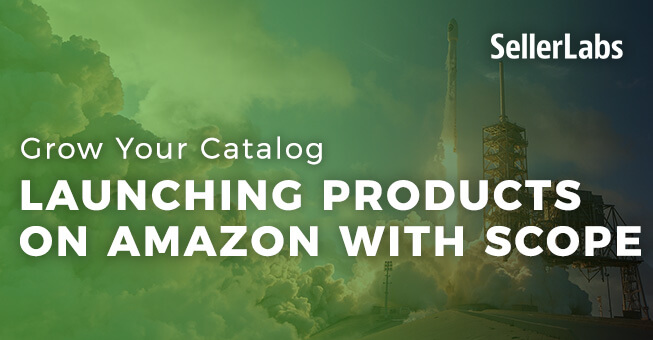Grow Your Catalog: Launching Products on Amazon with Scope

A few weeks ago, I spent two days in Atlanta at Resonate – and although the conversations I had were far ranging – with a great diversity of the types of businesses present – there was one topic that everyone could relate to: launching products on Amazon.
We recently published an interesting tip sheet on product launches, and Seller Labs Pro is a great offering that includes all the tools to do it right. But there’s a lot of work you have to put in to get to the point of thinking about launching a product. Whether you’re reselling or doing product development yourself, many of the strategies are the same in theory. And Scope can help. First up, analyzing the market demand for any product idea you have.
Define the Market Size
This is something that I think about a lot as the head of our product strategy. Market demand is essentially the total number of a particular good that consumers will buy. And while you won’t ever capture that exact quantity (nor will I, when I think about our products’ market demand), you can size market demand to determine whether there’s enough volume to enter with a product.
As a user of Scope, you know that it provides keyword search volume, which is a great metric to help you estimate the market size.
Search volume is not the only indicator you need to consider in market analysis. The search volume in Scope shows you the number of searches generated in the past month. However, this only shows you the market interest, which is how many people have an interest in products related to the keywords you selected. Be as specific as you can here because the step you take next will allow you to be just a little broader.
Investigate Price Points
If you’re launching a new product on Amazon, investigating price points can be difficult. My suggestion is to use Scope to find a specific keyword that is still broad enough to give you a few similar ASINs, that way you can review similar products you’re developing.
This is important to do before you enter a market because you need to know that pricing is the key factor that transforms your market interest hypothesis into a market demand hypothesis.
Once you’ve added a few similar products to your tracking list in Scope, you can see price points over time. There are many factors that can impact buying behavior, but your goal here is to investigate whether you can be profitable at the existing market price points. Even though you may be launching a totally new product, you can see the types of price points that the current buyers searching for products are seeing. Expect that this will create some pricing bias for them.
You will be concerned about margins, as well, to determine profitability. So make sure you have a fair idea (either through the other products you see in Scope or from your own research) to know what margins you can expect at various price points.
Watch Sales Performance
I can assume that if you’re still reading, Scope has shown you a search volume that is high enough to maintain interest, and shown you price points that are profitable. Now it’s time to put the two together to determine whether the actual sales volume works for you.
Again, if you’re launching a product that isn’t yet on Amazon, you’ll need to use some similar products to help you understand your target buyers response to price changes. If you look at products you’ve tracked in Scope, you can find reliable information about the product’s past price history as I mentioned, and then how that affects sales over time.
When the price goes up, do sales drop? And if so, by how much? Or do sales stay the same? Do they decrease, and if so, is it proportional? This is especially interesting – because if they drop only slightly with a marked price increase, you know the product has staying power.
Market demand is only one part of the puzzle in choosing a product to launch on Amazon. In my post next month, I’ll dive deep into market saturation and how if impacts product selection.
Are you already prepared with your products, and ready to launch? If so, make sure to check out Seller Labs Pro, a full suite of tools to help you both launch – and maintain – product sales on Amazon.

Lauren is our tech Product Manager at Seller Labs. Our Chief Problem Solver. In her free time, when she's not taking care of our customers needs, she's enjoying the great outdoors - gardening and gathering fresh eggs from her 7 chickens!






